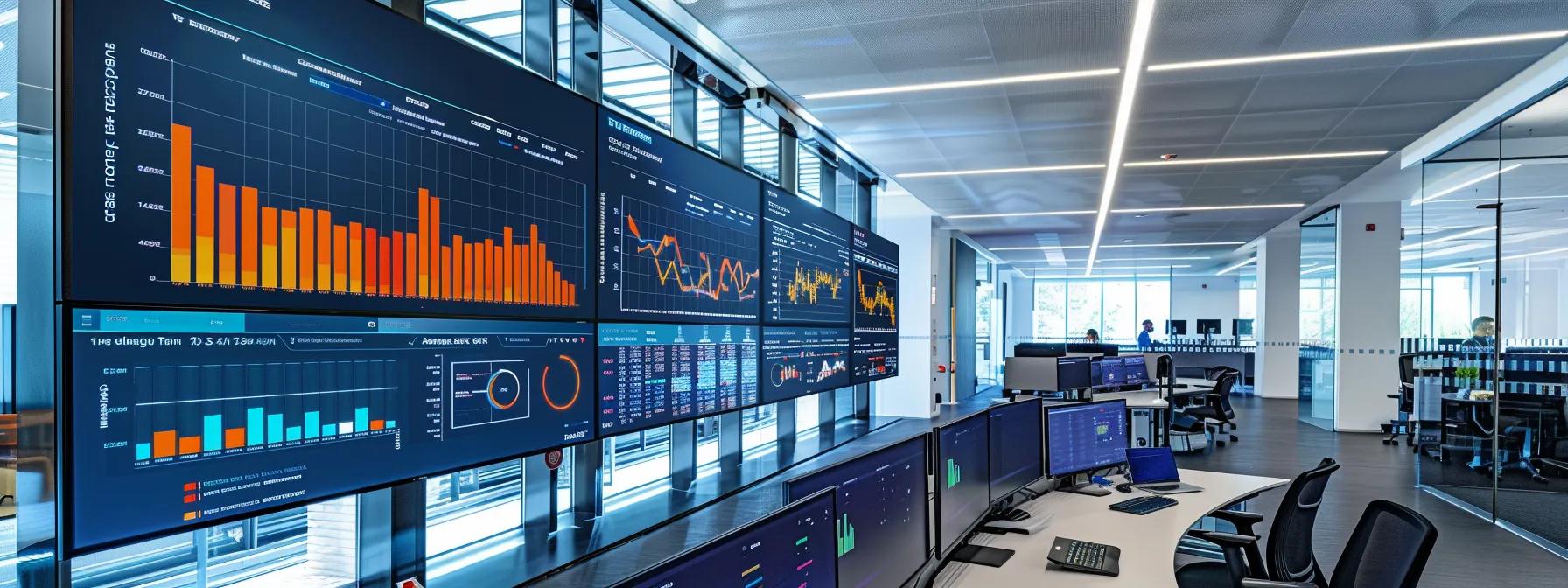Best Practices for Secure DevOps in Your CI/CD Pipeline

Best Practices for Secure DevOps in Your CI/CD Pipeline

Table Of Contents:
- What Is Secure DevOps and Why Is It Essential for CI/CD Pipelines?
- How to Assess Security Risks in Your Existing CI/CD Pipeline?
- Which Security Tools Should You Integrate Into Your CI/CD Pipeline?
- How to Develop and Implement Security Policies for DevOps Teams?
- What Are the Benefits of Automating Security Checks in DevOps?
- How to Measure the Success of Secure DevOps Integration?
- How Can Businesses Get Started With Secure DevOps Implementation?
- Frequently Asked Questions
In today’s rapidly evolving digital landscape, businesses—particularly an IT service provider—face increasingly sophisticated cyber threats that demand agile security strategies. One of the most impactful cybersecurity services for businesses is the integration of security practices directly into the software development and deployment pipeline, commonly known as Secure DevOps. This transformative approach safeguards digital assets while maintaining rapid delivery cycles. Secure DevOps unites development, operations, and security teams in a joint effort to deploy resilient, compliant, and secure software. This integration addresses vulnerabilities early in the development cycle, reduces operational bottlenecks, ensures regulatory compliance, and cuts down potential remediation costs.
For small to mid-sized businesses and professional service firms, adopting Secure DevOps is essential for protecting sensitive data and ensuring continuous operations while managing modern deployment complexities. By leveraging automated security scanning, continuous monitoring, and real-time vulnerability dashboards, companies gain improved visibility into their systems. This approach improves software delivery speed and substantially enhances cyber resilience. With evolving threats such as ransomware, phishing, and malware targeting CI/CD pipelines, embedding security in these processes is now a business imperative.
This article explores the fundamentals of Secure DevOps, methods to assess and mitigate CI/CD security risks, integration of security tools into development workflows, and strategies for robust security policies for DevOps teams. Each section provides actionable insights supported by examples and industry best practices to help businesses create a secure, compliant, and efficient operational environment.
Transitioning into the main discussion, the following sections address key queries regarding Secure DevOps and its significance, offering detailed guidance and practical examples for a smoother, more security-focused CI/CD process.
What Is Secure DevOps and Why Is It Essential for CI/CD Pipelines?
Secure DevOps integrates security practices into the entire software development lifecycle, especially in CI/CD pipelines. It secures code, processes, and operations simultaneously so vulnerabilities are identified and remedied early. By making security an ongoing, automated process, businesses maintain high delivery speeds while reinforcing data protection and compliance.
Instead of traditional siloed methods, Secure DevOps employs a continuous, collaborative approach among developers, operations teams, and security experts. Automation tools—such as static application security testing (SAST) and dynamic application security testing (DAST)—identify security flaws during code commits and before deployment, improving product quality and reducing remediation costs.
By implementing Secure DevOps, organizations accelerate application delivery by avoiding security delays. Early detection of vulnerabilities reduces the overall threat surface and mitigates risks during rapid deployment cycles. It also supports compliance with industry regulations through built-in audit-friendly processes. This proactive approach is fundamental for modern CI/CD pipelines, ensuring agile operations that prevent downtime and protect against persistent threats.
How Does Secure DevOps Improve Software Delivery Speed and Security?
Secure DevOps enhances delivery speed and security by embedding protocols into every CI/CD stage. Automation and close collaboration between security and development teams ensure code is continuously scanned by tools like SAST and DAST. This process catches vulnerabilities in early build and test phases rather than after deployment, reducing manual overhead and streamlining each code commit review.
Fast turnaround on security fixes prevents bottlenecks and delays in launching new features. With compliance checks integrated into every phase, deployed applications meet regulatory and industry standards, minimizing future remediation costs. Overall, Secure DevOps removes the “security as an afterthought” delay while significantly enhancing a company’s security posture.
Furthermore, automated measures promote continuous improvement. Immediate feedback enables developers to adopt more secure coding practices. With every iteration, the code base becomes more robust against threats, which reduces long-term patching needs and improves overall reliability and efficiency.
What Are the Key Principles of Secure DevOps?
The key principles of Secure DevOps are collaboration, automation, continuous monitoring, and compliance. It calls for the active engagement of developers, security professionals, and operations teams throughout the lifecycle so that security is woven into every phase from planning to maintenance.
Automation is fundamental, embedding security controls into CI/CD pipelines to enable real-time vulnerability detection. The “shift-left” concept places security earlier in the development cycle, allowing teams to address risks before production. Continuous monitoring ensures prompt responses to disruptions or emerging threats, which is critical for maintaining cyber resilience.
Compliance is equally central. By integrating regulatory requirements into automated workflows, teams can create audit trails that ease compliance verification. Adopting industry-standard security frameworks reinforces the overall security posture, ensuring that organizations are well-prepared against cyber threats while remaining agile.
How Does Secure DevOps Support Compliance With Industry Regulations?
Secure DevOps supports compliance by automating and standardizing security practices. Embedding security into CI/CD pipelines ensures that every stage adheres to internal policies and external regulatory requirements, such as GDPR, HIPAA, and PCI DSS. Automated compliance testing flags policy violations in real time so that remediation can occur quickly.
Security checkpoints in the pipeline generate logs and reports essential for audits and for demonstrating continuous risk mitigation efforts. Regular updates and proactive vulnerability assessments ensure non-compliance issues are addressed before they lead to major liabilities. Automation minimizes human error and ensures that best practices are consistently applied, bridging agile development with stringent regulatory demands and ultimately building customer and stakeholder trust.
How to Assess Security Risks in Your Existing CI/CD Pipeline?

Assessing security risks in an existing CI/CD pipeline is crucial for strengthening cybersecurity defenses. This process involves systematically evaluating every component—from code repositories and build servers to deployment environments—to pinpoint exploitable vulnerabilities. It begins by mapping the entire pipeline, identifying integration points, third-party components, and data flows.
Automated vulnerability scanning tools continuously monitor for common flaws such as injection attacks, misconfigurations, and dependency issues. Both static and dynamic analyses are employed to ensure comprehensive coverage. A thorough risk assessment also reviews current security policies, performs threat modeling, and carries out penetration testing to simulate attacks. The goal is to quantify risk using key performance indicators (KPIs) that reflect the organization’s operational and security priorities.
Continuous feedback loops ensure that lessons learned from production incidents and near-misses are integrated back into the development lifecycle, refining security controls and maintaining resilience against evolving threats.
What Tools Are Used for Security Assessment in DevOps?
A variety of tools are available for security assessment in DevOps, each enhancing overall system security. SAST tools analyze source code without execution—tools like Fortify, Checkmarx, and SonarQube detect anomalies and insecure coding patterns.
DAST tools, such as OWASP ZAP and Burp Suite, test running applications by simulating real attacks to uncover vulnerabilities like SQL injection and cross-site scripting. Additionally, Software Composition Analysis (SCA) tools, including Black Duck and Snyk, evaluate third-party components and open-source libraries for known vulnerabilities, ensuring that dependencies remain secure.
Other critical tools include container security solutions (e.g., Aqua Security, Twistlock) and CI/CD platforms with built-in scanning features. Using these tools together creates a layered security assessment that identifies vulnerabilities at every stage of development and deployment.
How to Identify Common Vulnerabilities in CI/CD Workflows?
Identifying common vulnerabilities in CI/CD workflows involves a mix of automated scans, code reviews, and manual testing. Frequent issues include misconfigurations in deployment scripts, insecure credential handling, dependency vulnerabilities, and insufficient logging of system activities. Static code analysis can reveal poor coding practices, while dynamic testing can uncover runtime issues.
For instance, hardcoded credentials and poorly managed API keys are common pitfalls that thorough reviews often expose. Similarly, misconfigured infrastructure-as-code templates may inadvertently expose sensitive settings. Regular updates and patching of library dependencies further reduce risks. Coupling these methods with continuous monitoring and periodic threat modeling ensures that vulnerabilities are detected early and prioritized effectively based on their potential impact.
What Are Best Practices for Conducting a Security Assessment?
Best practices for security assessments in CI/CD pipelines include establishing a secure configuration baseline, comprehensive automated testing, and continuously updating threat models. Begin by mapping the entire pipeline to identify integration points, dependencies, and data flows. Once documented, deploy automated scanners at multiple stages—from commit to production—to catch vulnerabilities and misconfigurations.
Regular code reviews and penetration tests add extra layers of scrutiny. Feedback from each testing phase should feed into a dynamic risk management framework that continuously adjusts security measures. Documenting assessments with clear KPIs and remediation timelines, along with ongoing security awareness training, further strengthens the defense against evolving threats.
Which Security Tools Should You Integrate Into Your CI/CD Pipeline?
Integrating the right security tools into CI/CD pipelines is vital to secure every stage of the development process. The tools should seamlessly integrate with existing infrastructure and cover various security domains including code analysis, vulnerability assessment, and compliance auditing. Effective integration ensures that both static and dynamic testing occur regularly, reducing the overall attack surface and accelerating vulnerability resolution.
A balanced approach involves combining automated and manual security measures. Leading SAST tools like SonarQube and Checkmarx are crucial for early code-level vulnerability detection, while DAST tools such as OWASP ZAP and Burp Suite simulate live attacks on applications. Additionally, SCA tools like Snyk or Black Duck manage risks associated with third-party libraries. Continuous monitoring and runtime protection platforms keep security postures updated as applications evolve, creating a continuous feedback loop that improves software quality and minimizes exposure.
Automation of tasks such as vulnerability scanning, metric tracking, and compliance reporting further reduces manual intervention, ensuring that security checks do not slow down delivery speeds. Dashboards and integrated reporting provide real-time visibility into the pipeline’s security posture.
How Do Static and Dynamic Application Security Testing Tools Work?
SAST and DAST tools work together to protect software during development. SAST tools analyze source code without executing it to find vulnerabilities like buffer overflows, insecure coding practices, and logic errors. This early scanning allows developers to address issues before they become critical.
Conversely, DAST tools evaluate applications in their running state by simulating external attacks. They detect threats such as injection attacks, cross-site scripting, and authentication bypasses by analyzing the application’s responses. Together, SAST and DAST create a layered security approach that ensures both the integrity of the code and the security of running applications.
What Is Software Composition Analysis and Why Is It Important?
Software Composition Analysis (SCA) focuses on identifying and managing third-party components and open-source libraries within an application. SCA tools automatically analyze project dependencies, flagging vulnerabilities and licensing risks that could compromise security. This is critical because even when in-house code is secure, insecure third-party components can create vulnerabilities. SCA provides real-time alerts and detailed reports, enabling rapid remediation of issues and ensuring compliance with licensing requirements—thereby reducing risks linked to supply chain attacks.
How to Automate Security Scanning in CI/CD Pipelines?
Automating security scanning in CI/CD pipelines involves integrating tools and scripts that run during build, test, and deployment phases. With every code commit, automated scans are triggered to document and flag any vulnerabilities immediately, ensuring continuous compliance and rapid remediation.
Typically, a combination of SAST, DAST, and SCA tools is employed. Configuration files (e.g., YAML or JSON templates) automate the scanning process and generate reports that security teams review via integrated dashboards. This process shortens the feedback loop and minimizes human error, allowing developers to implement fixes swiftly while keeping the deployment pipeline secure and efficient.
How to Develop and Implement Security Policies for DevOps Teams?

Developing security policies for DevOps teams requires clear, actionable guidelines that integrate security best practices into everyday workflows. The goal is to foster a security-first culture that supports rapid development while ensuring robust protection. Policies should cover access control, data management, incident response, and continuous monitoring, ensuring that every phase meets stringent security standards.
Effective security policies start with comprehensive risk assessments to identify vulnerabilities and prioritize remediation steps. Once risks are identified, policies can be standardized and, where possible, automated via configuration management and CI/CD integrations. Regular training and awareness programs ensure teams remain informed about emerging threats and best practices. Flexible policies that are periodically reviewed and updated help maintain compliance with evolving regulations and technological changes.
What Security Policies Are Critical for CI/CD Pipelines?
Critical policies for CI/CD pipelines include those governing access control, secure coding practices, vulnerability management, and incident response. Access control policies restrict permissions to authorized personnel, reducing risks from unauthorized changes or insider threats. Secure coding policies require adherence to best practices in software development. Vulnerability management policies mandate regular scans and prompt resolution of issues, while incident response policies outline procedures for breach detection, reporting, and post-incident analysis. Logging and monitoring policies also ensure that all actions within the pipeline are recorded for quick diagnosis and remediation.
How to Align Security Policies With Business Compliance Requirements?
Aligning security policies with business compliance involves mapping internal controls to the specific mandates of regulations such as GDPR, HIPAA, PCI DSS, or ISO 27001. This requires understanding key regulatory areas that impact the CI/CD pipeline and modifying policies to ensure compliance. Regular audits and automated compliance checks help maintain alignment, while clear documentation and defined roles within the DevOps team support accountability and transparency. The ultimate aim is to create a verifiable security posture that meets regulatory demands and protects the organization from cyber threats.
How to Train DevOps Teams on Security Best Practices?
Training DevOps teams on security best practices involves a structured approach that includes formal training sessions, hands-on workshops, and continuous learning programs. Teams must be updated on the latest threats, vulnerabilities, and security tools that integrate with CI/CD pipelines. Regular sessions led by cybersecurity experts, supported by practical exercises and simulated attack scenarios, help reinforce learning. Online certifications and internal knowledge-sharing further establish a culture of security awareness. Appointing security champions within teams and routinely assessing the effectiveness of training through feedback and performance metrics ensure continuous improvement.
What Are the Benefits of Automating Security Checks in DevOps?
Automating security checks in DevOps offers multiple benefits, including reducing manual errors, lowering labor costs, and ensuring consistent enforcement of security standards. The primary advantage is the increased speed and efficiency in identifying and remediating vulnerabilities throughout the continuous delivery process. Automation allows teams to focus on higher-level problem solving and innovation by handling repetitive tasks.
By eliminating manual approval processes, automation prevents delays and security bottlenecks in the development pipeline. Proactive automation also results in significant cost savings by reducing the likelihood of breaches and minimizing remediation efforts. Continuous monitoring ensures that any new vulnerabilities are flagged immediately, which not only improves the security posture but also supports long-term operational stability.
How Does Automation Reduce Security Bottlenecks in CI/CD?
Automation streamlines security processes by running vulnerability scans with each code commit, thus providing rapid feedback to developers. This continuous review process eliminates the need for slow, manual checks and prevents delays in the deployment cycle. Automated alerts and dashboards create real-time visibility of the security status, enabling quick corrective action. By removing manual review stages, the system maintains a balance between agile delivery and robust security controls.
What Are the Cost Savings From Proactive Security Automation?
Proactive security automation delivers cost savings by preventing expensive breaches and reducing the need for labor-intensive manual audits. Early detection of vulnerabilities minimizes remediation costs, regulatory fines, and the financial impact of data breaches. Automated compliance reporting cuts down on audit preparation efforts, further reducing operational expenses. Many organizations report up to a 40% reduction in remediation efforts and faster time-to-market, highlighting the financial benefits of integrating automated security measures.
How to Monitor and Respond to Security Incidents Continuously?
Continuous monitoring of security incidents is achieved by integrating real-time logging, automated alerts, and centralized dashboards within the CI/CD pipeline. These tools aggregate data from multiple sources, allowing for rapid identification of anomalies that may indicate cyberattacks or breaches. Automated incident response systems promptly isolate affected components, notify security teams, and initiate remediation protocols. Regular drills and simulations ensure that all team members are prepared to respond efficiently. A comprehensive, updated incident response plan helps mitigate damage quickly, ensuring that emerging threats are neutralized before causing significant harm.
How to Measure the Success of Secure DevOps Integration?

The success of Secure DevOps integration can be measured using Key Performance Indicators (KPIs) that track both security improvements and operational efficiency. Common KPIs include the mean time to detect (MTTD) and remediate (MTTR) vulnerabilities, the frequency of successful scans, compliance audit pass rates, and the number of security incidents prevented before deployment. The impact on deployment timelines and release quality also provides insights into how well the integration balances speed and security.
Establishing baseline metrics before integration is crucial, followed by continuous monitoring of improvements. For example, a 25% reduction in remediation time over six months is a strong indicator of success. Feedback loops supported by dashboards and automated reports help stakeholders assess performance in real time and guide future enhancements, including additional training or tool investments.
What Key Performance Indicators (KPIs) Track Security Improvements?
KPIs for tracking security improvements include the mean time to detect and remediate vulnerabilities, the ratio of vulnerabilities identified versus resolved in a set period, compliance audit scores, and the success rate of automated security tests. Additional metrics may include deployment frequency, overall code quality, and the ratio of incidents prevented compared to those occurring after deployment. Regular monitoring of these indicators provides a clear, data-driven picture of the integrated security processes’ efficiency and highlights areas for further improvement.
How to Use Feedback Loops to Enhance Security in CI/CD?
Feedback loops are critical for continuous improvement in CI/CD security. By systematically incorporating data from automated scanning, incident reports, and vulnerability assessments, organizations can refine their security policies and practices over time. Regular retrospective analysis sessions with cross-functional teams help identify underlying issues and suggest corrective actions. Dashboards showing real-time metrics and trends support proactive decision-making, while stakeholder feedback ensures that security enhancements are shared across teams—creating a culture of continuous, incremental improvement.
What Are Common Challenges and How to Overcome Them?
Common challenges in measuring secure DevOps success include resistance to change, data overload from automated tools, and balancing rapid development with thorough security evaluations. These challenges can be managed through strong leadership, clear communication, and ongoing security training. Automated tools that filter and prioritize vulnerability data help prevent teams from being overwhelmed, while setting measurable KPIs and conducting regular review meetings keep progress on track. Cross-departmental collaboration and transparent reporting further help overcome resistance by making security a shared responsibility across the organization.
How Can Businesses Get Started With Secure DevOps Implementation?
Businesses looking to implement Secure DevOps should start with a detailed assessment of their current CI/CD pipeline’s security posture. This initial evaluation must include an inventory of components, identification of vulnerabilities, and a review of current security practices. Based on this assessment, companies can create a roadmap that integrates automated security testing, continuous monitoring, and robust policy frameworks tailored to their environment. Partnering with experienced cybersecurity experts or managed service providers can help ensure alignment with industry best practices and compliance requirements.
Starting small with pilot projects or incremental changes allows teams to adapt without major disruptions. Early successes build confidence and pave the way for broader implementation. Communicating the benefits and long-term cost savings of Secure DevOps to stakeholders is critical for organizational buy-in, ensuring the transformation enhances both security posture and delivery speed.
What Does a Secure DevOps Implementation Service Include?
A typical Secure DevOps implementation service includes a comprehensive evaluation of the current software delivery process, the integration of automated security tools, policy formulation, and hands-on training for DevOps teams. The service begins with a detailed assessment that identifies vulnerabilities and sets measurable benchmarks. Implementation then follows, involving the integration of SAST, DAST, and SCA tools into the CI/CD pipeline to automate security scanning and compliance checks. Additionally, the service includes the design and deployment of robust security policies tailored to the organization, along with continuous monitoring systems and feedback loops to track improvements. Training sessions and workshops are also provided to ensure teams are equipped to work with the new security infrastructure.
How to Choose the Right Cybersecurity Partner for DevOps?
Selecting the right cybersecurity partner involves evaluating providers based on their expertise in integrating security within agile environments, proven experience with similar organizations, and the ability to offer custom solutions that align with business goals. Prospective partners should possess thorough knowledge of CI/CD operations and advanced capabilities in automated security tools and continuous monitoring systems. Clear communication, flexible service models, and ongoing training support are essential. Reviewing case studies, client testimonials, and assessing responsiveness during initial consultations can help in choosing a partner that understands both technology and business nuances, ensuring smooth and effective Secure DevOps implementation.
What Are the Typical Timelines and Milestones for Integration?
Timelines for Secure DevOps integration vary based on the complexity of the current environment and the scope of changes required but typically span three to six months. The process usually starts with a security assessment and planning phase (one to two months), followed by the integration of automated security tools and policy implementations (another one to two months). Pilot projects and initial testing occur over the next month, and full-scale implementation with continuous monitoring is generally reached within six months. Key milestones include completing the vulnerability assessment, integrating tools, rolling out policies, conducting training sessions, and establishing continuous monitoring dashboards. Regular progress reviews help ensure that the project stays on schedule and adapts to evolving security requirements.
Frequently Asked Questions
Q: What is the difference between Secure DevOps and traditional DevOps? A: Secure DevOps integrates security practices throughout the CI/CD pipeline, whereas traditional DevOps often treats security as a separate, later-stage process. This means that vulnerabilities are detected earlier, with real-time automation ensuring continuous monitoring and enforcement of security policies—leading to faster deployments and more robust protection against cyber threats.
Q: How can small to mid-sized businesses benefit from implementing Secure DevOps? A: Small to mid-sized businesses benefit by reducing costs associated with breaches through proactive vulnerability identification. Automation streamlines development processes so that security checks do not delay releases. Additionally, Secure DevOps enhances regulatory compliance and builds customer trust by safeguarding sensitive data, making it a cost-effective strategy for firms with limited security resources.
Q: Which security tools are most essential for a CI/CD pipeline? A: Essential tools include SAST tools (e.g., SonarQube, Checkmarx), DAST tools (e.g., OWASP ZAP, Burp Suite), and SCA tools (e.g., Snyk). These tools together provide comprehensive vulnerability screening of source code, runtime behaviors, and third-party dependencies.
Q: How does automation in Secure DevOps contribute to cost savings? A: Automation reduces human error, quickly detects vulnerabilities, and minimizes disruptions by providing continuous security checks. This leads to early remediation, lowering both breach risks and remediation costs. Automated compliance reporting and reduced manual audits further contribute to operational cost savings.
Q: What challenges might organizations face when integrating Secure DevOps, and how can they be overcome? A: Challenges include resistance to change, data overload from automated tools, and balancing speed with thorough security. These can be overcome through ongoing training, clear communication of benefits, and effective use of feedback loops. Automated tools that prioritize vulnerabilities help keep teams focused on critical issues, while regular reviews and cross-departmental collaboration ensure a shared security responsibility.
Q: How often should security policies in CI/CD pipelines be reviewed and updated? A: Policies should be reviewed every six months or following any major incident or system change. Regular updates ensure alignment with evolving regulations, emerging threats, and new technologies. Continuous feedback and audit results can trigger timely revisions.
Q: Can Secure DevOps be implemented alongside agile methodologies? A: Yes, Secure DevOps complements agile methodologies by embedding security into every sprint or iteration. This integration allows rapid development alongside continuous security measures, ensuring that security remains a core part of the process without hindering speed or innovation.
A table like the one above provides a quick reference for understanding different security tool categories, their primary functions, and benefits. This self-assessment aids in selecting the right tools for your CI/CD pipeline, ensuring a comprehensive security strategy.
By focusing on secure development practices, continuous evaluations, and strategic automation of security tasks, organizations can build a resilient, compliant, and efficient CI/CD pipeline. The integration of these advanced cybersecurity measures not only safeguards business-critical data but also ensures operational continuity, positioning organizations ahead of the curve in today’s competitive digital landscape.

